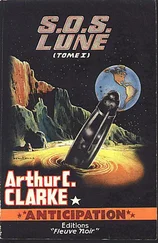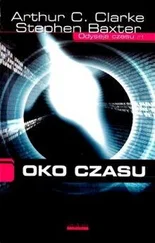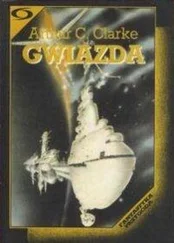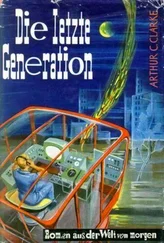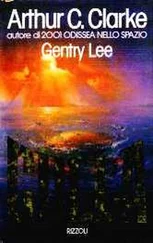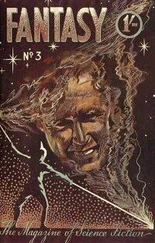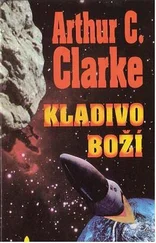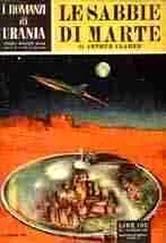That much was clear. But as Eugene displayed screen-filling equations and graphs in several dimensions, and as he talked ever more rapidly, Siobhan wondered how he had ever got through his doctorate oral exam.
Eventually she broke in. “Eugene. Slow down, please; I’m afraid you’re leaving us all behind.” He glared at her with a resentful intensity. But this was the heart of the matter; she needed to get this clear. “You’re showing us results of your neutrino measurements.”
“Yes, yes. Of the three flavors of neutrinos, which are interrelated by—”
She waved that away. “You are seeing oscillations in the neutrino flow.”
“Yes.”
“And that in turn,” she pressed on doggedly, “reflects oscillations in the fusion processes in the core.”
“Precisely,” he said sarcastically. “The neutrino flux tracks back to local changes in core temperature and pressure. Which in turn I’ve been able to model as dynamic oscillations of the core as a whole.” He displayed dense mathematics, which Siobhan recognized as nonlinear wave equations. “As you can see—”
“Eugene,” Mikhail said gently, “don’t you have some kind of picture of this?”
Eugene looked surprised by the question. “Of course I do.” He tapped his softscreen and brought up an image of a sphere. It was covered by a kind of gridwork, like lines of longitude and latitude. And the pattern faded and pulsed rhythmically.
Bud Tooke whistled. “And this is the core of the sun? Our sun? The damn thing’s ringing like a bell.”
Rose Delea folded her arms and pulled her face. “Forgive a mere geologist for being skeptical, but the core of a star is a pretty massive bloody thing. How can it suddenly start to oscillate?”
Now Eugene’s rather terrifying glare was turned on her. “But that’s trivial.”
Trivial: among academics that word was a killer put-down. Rose’s face was a mask of hostility.
Siobhan said quickly, “Take it step by step, Eugene.”
He said, “It goes back to the work of Cowling in the 1930s. Cowling showed that the rate of nuclear energy generation in the core is dependent on the fourth power of temperature. Which makes conditions in the core of the sun extremely sensitive to temperature changes …”
He was right, Siobhan realized uneasily. That fourth-power factor would lead to even small changes being magnified. Huge as it was, the core wasn’t necessarily stable at all, and any small perturbation could disrupt it significantly.
Bud Tooke interrupted with a raised finger. “I don’t get it, Eugene. So what? Even if the whole core explodes, it would take megayears for the bang to work its way out to the surface.”
Rose Delea grinned sourly. “Don’t tell me. The radiative layer is screwed too, right?”
She was correct; another of Eugene’s images showed it. That great tank of slow-propagating energy was flawed by a puckered scar, like a wound stitched through flesh by a bullet. And so, Siobhan realized uncomfortably, the million-year lagging around the core wouldn’t work as a protective layer: any energy released in the core could be squirted straight out to space.
Eugene looked at Rose, puzzled. “How did you know about the flaw?”
“Because this is turning out to be that kind of day.”
Eugene talked on about his models of the core oscillations, and how he was hoping to run them back in time. “I’m intending to develop models of the inciting event of this instability, which—”
“Never mind the past for now,” Siobhan interrupted. “Look forward. Show us what’s to come.”
Eugene seemed puzzled that the future should even be of interest compared with the deep physical mystery of the origin of this anomaly. But he obediently ran his graphic forward in time, at an accelerated pace.
Siobhan could see that the wave propagation through and around the core was complex, with multiple harmonics added to the base oscillations, and waves that were nonlinear, as the specialists would say, with energy leaking from one mode into another. But she immediately saw that there were patterns of interference, of dissipation—and, more ominously, of resonance, when the energy she could so clearly see flowing around the core of the sun gathered into powerful peaks.
Eugene froze the image. “Here’s the most recent spike, the June 9 event.” One side of the core was flaring bright with false color. “The observational data confirms my preliminary modeling, and validates my future projections …” By observational data, Siobhan thought ruefully, he meant a devastating storm that had cost thousands of human lives.
She asked, “And what’s to come?”
He ran the model forward at a greater pace. The patterns of oscillation shifted and swam in Siobhan’s vision, too rapid to follow in detail.
Then, suddenly, the image flared bright, all over the core, almost bright enough to dazzle. People flinched, briefly shocked.
***
Eugene shut down his graphics. He said laconically, “That’s it.”
Rose Delea said dangerously, “What do you mean, that’s it ?”
“At this point the model breaks down. The oscillations become so large that—”
“Your damn model!” Delea shouted. “Is that all you can think about?”
“Let’s take it easy,” Siobhan said, thinking fast. “Eugene, we’re looking at another event here. Correct? Another June 9.”
“Yes.”
“But more energetic.”
He looked at her, puzzled by her ignorance once more. “That’s obvious. ”
Siobhan glanced around the table, at wide-eyed, uncomfortable faces. Evidently Eugene hadn’t shared these results with anybody before, not even Mikhail.
Bud asked, “ How much more? And how will it manifest itself? How will it hit us, Eugene?”
Eugene tried to answer, but he descended quickly into technicalities.
Mikhail laid a hand on Bud’s arm. “I don’t think he can say. Not yet. I’ll work with him on it.” He went on thoughtfully, “But you know, this isn’t unprecedented. We might be looking at another S Fornax.”
“S Fornax?”
For decades the astronomers had been studying middle-aged stars of the sun’s class, and on many of them had noticed cycles of activity similar to the sun’s. But some stars showed rather more variability than others. An unspectacular star in the constellation called Fornax had suddenly flared up one day, shining twenty times as bright as usual, for maybe an hour.
Mikhail said, “If the sun erupted like S Fornax, the energy input would have been something like ten thousand times as bad as our worst solar storms.”
“And what would that do?”
Mikhail shrugged. “Disable the whole satellite fleet. Destroy Earth’s ozone layer. Melt the surfaces of the ice moons—”
Siobhan remembered dimly that the constellation name, Fornax, meant “furnace.” How appropriate, she thought.
But Eugene actually laughed. “Oh, this core nonlinearity will be much more energetic than that. Orders of magnitude worse. Don’t you even see that much?”
That crack brought him looks of resentment, even hatred.
Siobhan studied him, baffled. It was as if all this were no more than a mathematical exercise to him. He was just a boy who saw patterns, she thought, patterns in the data; the patterns’ meaning in human terms was invisible to him. She felt almost frightened of him.
But she must concentrate on what he had said, not the way he said it. Orders of magnitude. To a physicist, indeed to a cosmologist, an order of magnitude meant a factor of ten. So whatever was coming would be ten, a hundred, a thousand times worse than June 9, worse even than this S Fornax event of Mikhail’s. Her imagination quailed.
Читать дальше

